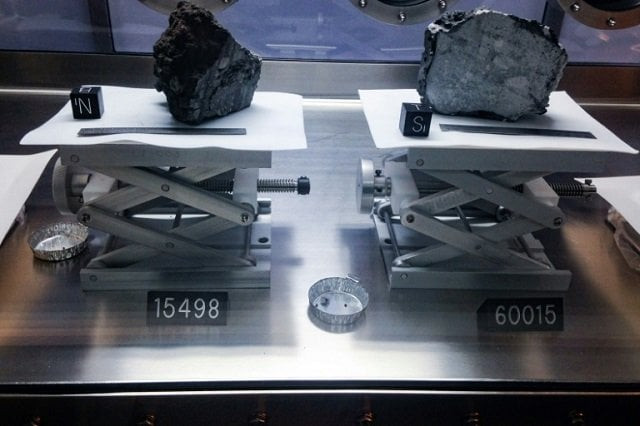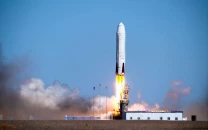Moon rocks help transform understanding of the universe
Apollo astronauts collected 842 pounds (382 kilogrammes) of rocks and soil during their six missions to the Moon

Moon rocks brought back by Apollo astronauts on display at the Johnson Space Center in Houston, Texas. PHOTO: AFP
Moon rocks look rather nondescript -- they are often grey in colour -- but for NASA planetary scientist Samuel Lawrence, they are the "most precious materials on Earth."
What is certain is that the lunar samples first gathered by Apollo 11's Neil Armstrong nearly 50 years ago have helped transform our understanding of the cosmos.
Apollo astronauts collected 842 pounds (382 kilogrammes) of rocks and soil during their six missions to the Moon between 1969 and 1972 and brought it all back to Earth.
'A long ride': 50 years ago, a dress rehearsal for the Moon landing
"The Moon is the Rosetta Stone of the solar system," Lawrence, who works at the Johnson Space Center in Houston, said in an interview with AFP. "It's the cornerstone of planetary science."
"People don't fully appreciate just how important studying the Apollo samples was for understanding the solar system and the universe around us," he said.
"Many of the discoveries that we've made in planetary science, not just on the Moon, but on Mercury, on Mars, on some of the asteroids, directly relate to some of the results that we obtained during the Apollo missions."
Studying Apollo rocks has given scientists an understanding of how the Moon was created, roughly at the same time as Earth some 4.3 to 4.4 billion years ago.
Debris spent the next several hundred million years coalescing in Earth orbit into the Moon we have today, explained Lawrence.
"We learned that the interior structure of the Moon is like the Earth," he said. "It has a crust, it has a mantle and it has a core."
And while life evolved on Earth, "the Moon is lifeless," he said.
New Discoveries
Several moon rocks are on display at the Johnson Space Center, where they attract hundreds of thousands of visitors every year.
President Richard Nixon also gave moon rocks from Apollo 11 and Apollo 17 to all of the nations of the world -- 135, at the time -- as a token of US goodwill.
But most of the moon rocks are kept at NASA's Lunar Sample Laboratory in Houston. Another cache of samples is stored at White Sands, New Mexico.
"They're kept in sealed sample containers in a secure vault that's capable of surviving hurricanes and many other natural disasters," Lawrence said.
Lunar samples are being handed out this year to scientists around the country for further study to mark the 50th anniversary of the Apollo 11 mission.
"We're very careful," Lawrence said. "These are the most precious materials on Earth and they go through a rigorous process when scientists request a sample."
And while the samples have been in NASA hands for five decades, new discoveries are still being made.
"The rocks haven't changed but our ability to analyse them has in terms of laboratory equipment," Lawrence said.
Among the recent discoveries? Evidence of water.
The Moon is shrinking, wrinkling due to quakes: study
"We're not talking about lots of water," Lawrence said. "But it's there and we didn't really appreciate it during the Apollo era."
Lawrence said he is excited about the possibility of sending astronauts back to the Moon, a goal President Donald Trump has set for 2024.
"The (Apollo) astronauts only directly explored an area that's roughly the size of a large suburban shopping mall," Lawrence said. "There's a lot of places on the Moon that we haven't yet explored."
"Six missions to the Moon transformed our understanding of the universe," he said. "Imagine what happens when we're going there for weeks or months at a time. It's going to be pretty spectacular."



















COMMENTS
Comments are moderated and generally will be posted if they are on-topic and not abusive.
For more information, please see our Comments FAQ